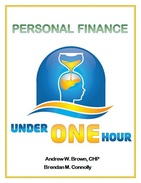I hope you had a great 2015, but now it’s time to look towards 2016. If you are like most people, you had some good times and bad times during the year. Maybe you completed some goals or resolutions, but maybe you also developed some bad or addictive habits. It is easy to get into a routine that you don’t care for, but it is important to understand that habits can be broken, and new goals can be made.
With the beginning of a new year coming up, about half of the United States makes some sort of New Year’s Resolution. Most of these resolutions are not seen through fruition, however, they are much more likely to be completed if they are written down.
Perhaps one of the best type of goals you can make is a flexible or easy daily goal. This can be as simple as doing 5 minutes of stretching when you wake up every morning. The point is, it’s something that starts you right, is not difficult, and feels good having completed your first task of the day. You can also use this for larger goals in tandem. For instance, if you want to lose 25 pounds, you don’t have to do it all in one week. You can, and should, space it out by focusing on modifying the habits that allowed you to gain weight. Maybe it’s as simple as replacing 1 soda per day with a glass of water. Might not be the biggest change, but it adds up over time.
You don’t have to start on every single goal at once. By taking on too much, you risk not doing anything. You can start small, and once you master one goal, move on to the next goal. Or, you might make new goals every quarter instead of just once per year.
A great idea is to reward yourself along the way. Once you’ve completed a month’s worth of your goal, or goals, give yourself a reward. Make sure it’s something you enjoy instead of something that will either break your goal or revert to a habit you don’t necessarily want. It might be something you have been wanting or needing for a while, but the completion of your goal gives you permission to finally do it.
Make the reward another type of benefit. For instance, if your goal is to eat something healthy every day so that you can lose weight, you might reward yourself with that blender or appliance you’ve been wanting. This might help you feel great about all that you have accomplished and will contribute to your success in the end result.
Tracking your progress is another great way to figure out when you earned your reward and how far you have come. If you get off track of your goal, or miss a day, know that it’s ok and keep trying. You've probably made some progress, and keeping a log will help you realize that.
Make each relapse a competition. If you successfully completed 12 days of your goal before you missed a day, try for 15 days in a row. Just keep pushing yourself. You’ll benefit even if you only completed 5 days the next time. Just try to make it a fun competition with yourself and don't get down on yourself for being human and making mistakes. At least you are one of the few people that are actually trying to get back up and keep improving yourself.
Pursuing these goals with friends or family can really help you to stay accountable and accomplish more. It might also be fun to do beneficial activities together and grow together.
Good luck on your 2016 goals!
Andrew Brown
More Articles:















